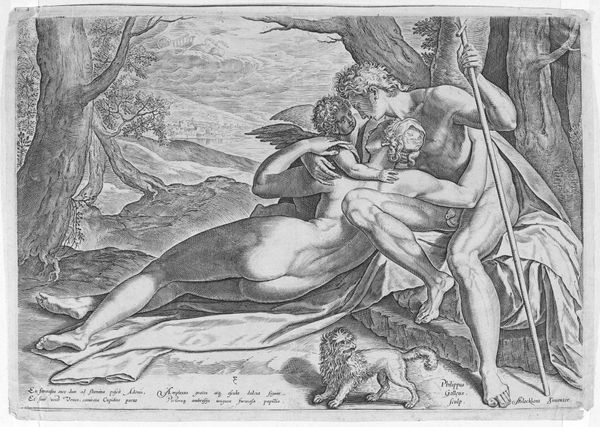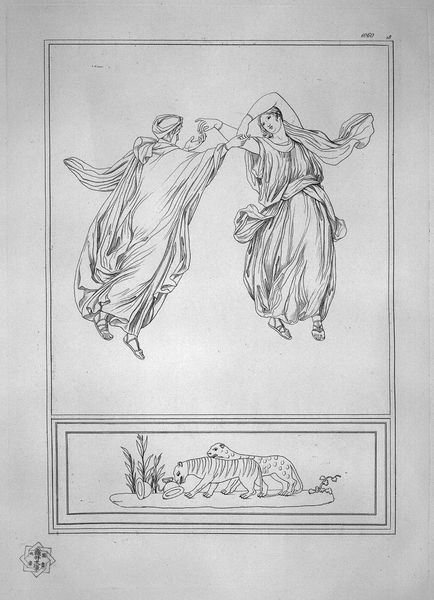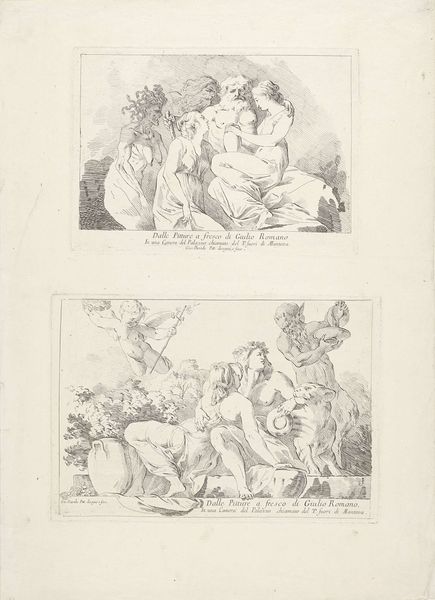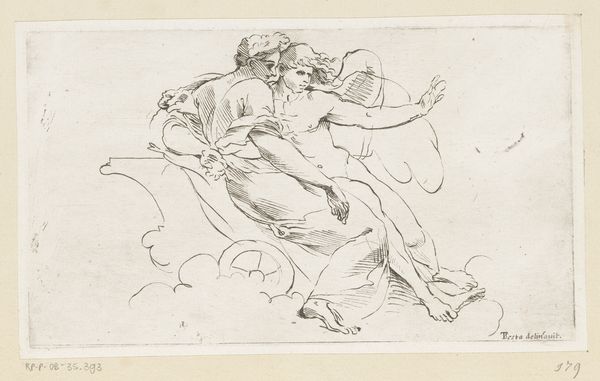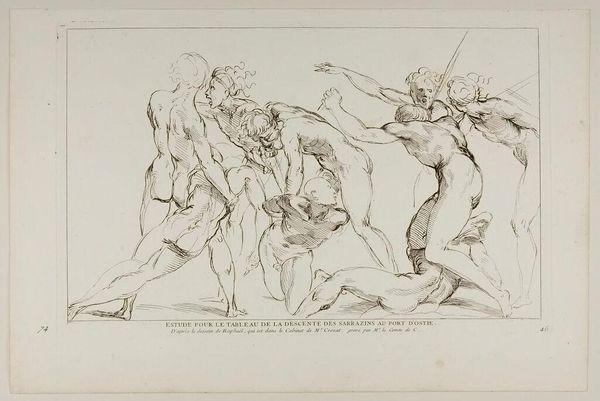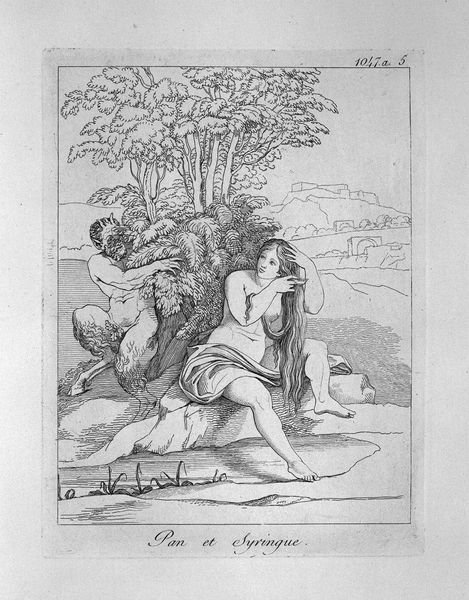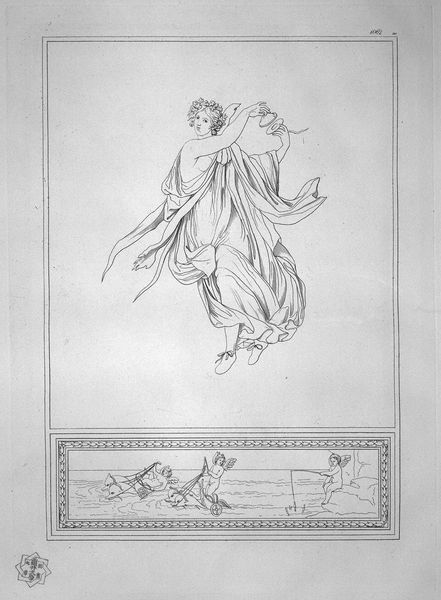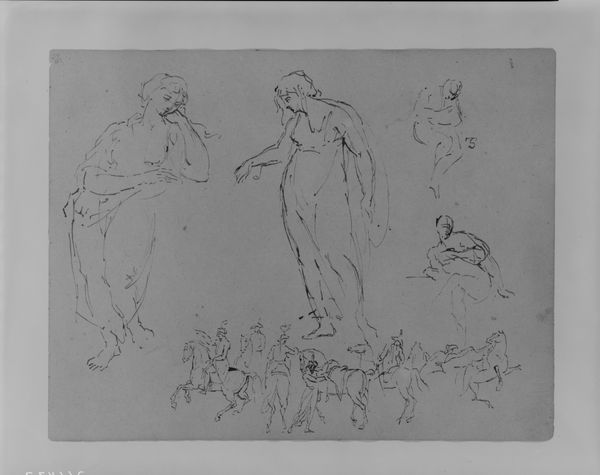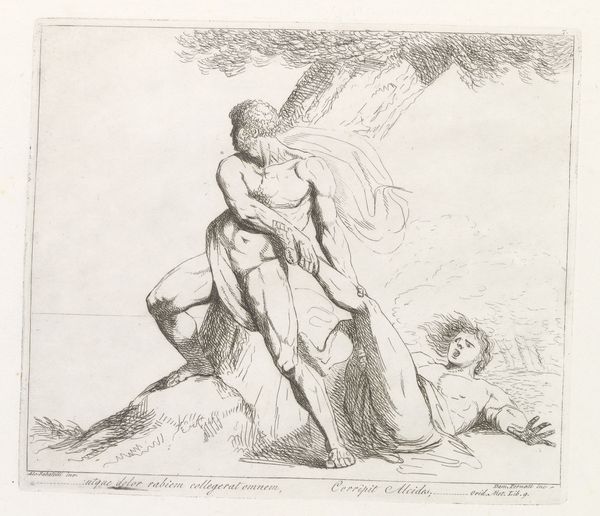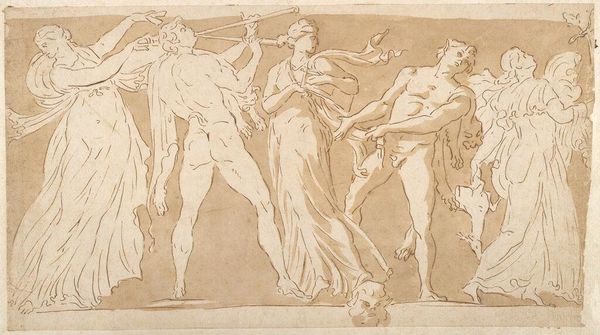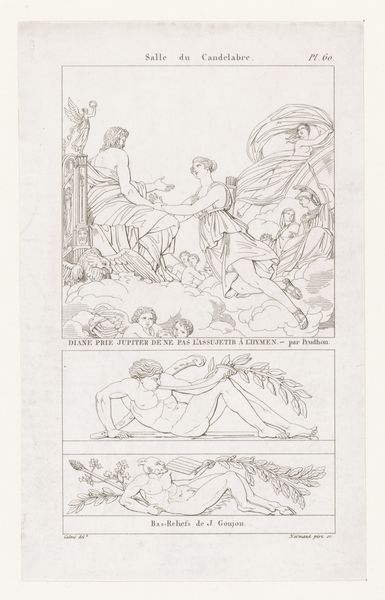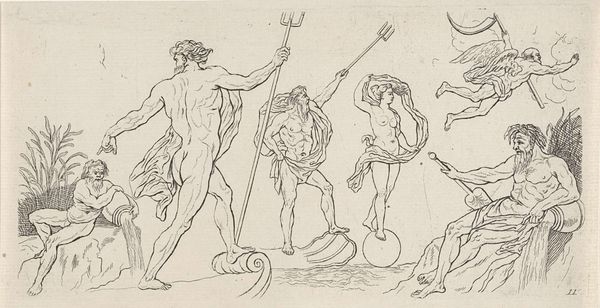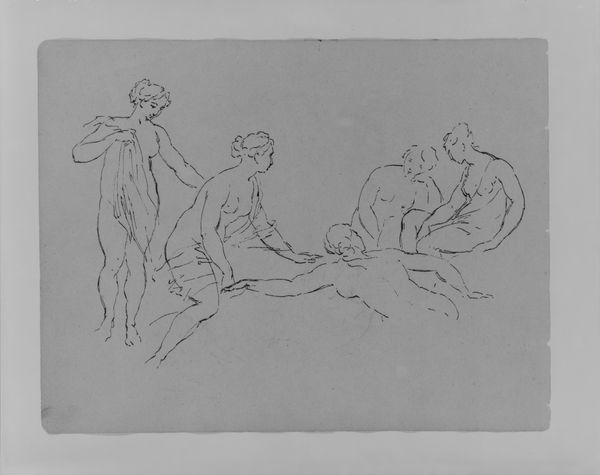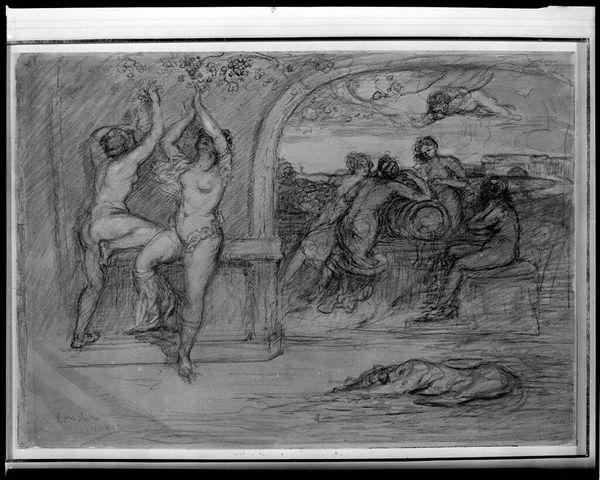
drawing
#
drawing
#
neoclacissism
#
greek-and-roman-art
#
figuration
#
roman-mythology
#
mythology
#
human
#
history-painting
#
academic-art
#
nude
Copyright: Public domain
Editor: Here we have Giovanni Battista Piranesi’s drawing, "Gemini and Virgo". It looks like pen and ink. I’m really struck by the starkness of the figures against the blank background. How might we interpret this work, considering Piranesi's context? Curator: That’s a great starting point. Piranesi was deeply immersed in the rediscovery of classical antiquity during his time. This drawing, with its Neoclassical style and mythological themes, really exemplifies that moment. How do you think the rise of museums influenced this fascination with the past? Editor: I guess the new public museums were exhibiting classical sculptures that hadn't been seen for centuries, generating popular enthusiasm? Curator: Precisely. These images, with their clean lines and idealized forms, tapped into that cultural fervor. Think about the sociopolitical context – the Enlightenment, the fascination with reason and order – how did these images serve those ideological goals? What do you make of the specific myths chosen? Editor: I see that Gemini refers to the Roman mythological twins Castor and Pollux. That suggests a brotherhood, I suppose. What is this history painting conveying in terms of those broader ideals? Curator: Consider the intended audience. Piranesi was selling these prints to wealthy Europeans, who understood and valued those classical references. He was constructing a narrative of cultural and historical importance for Italy itself. It speaks to power, knowledge, and the perceived lineage of Western civilization. Editor: So, by referencing classical mythology in such a formal style, Piranesi wasn't just making art; he was reinforcing a specific cultural and social order? Curator: Exactly! He's both participating in and shaping a narrative about history and identity. I think, thinking about today's reception, what are the modern cultural forces at play influencing today's consumption of the drawing? Editor: This really changed my understanding; it is not *just* classical imitation but a strategic act! Curator: Indeed. Analyzing the role art plays within cultural institutions, gives an awareness of who gets to define these artistic narratives and what purposes they serve.
Comments
No comments
Be the first to comment and join the conversation on the ultimate creative platform.
